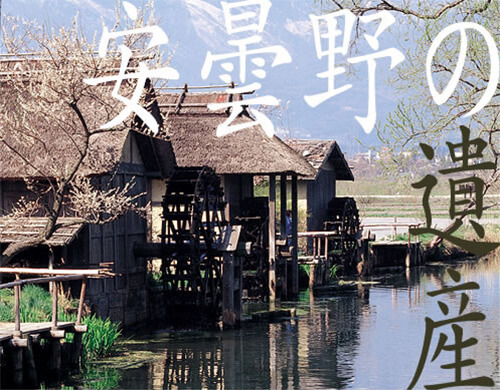
Akira Kurosawa’s Film Dreams
This film which is comprised of eight episodes, after depicting the end of civilization by a nuclear explosion, abruptly moves on to a scene of a picturesque village along a beautiful river which is lined with waterwheels along the banks. Kurosawa has an old man appear on the scene, who has lived all his life in this village with no electricity or petrol and talk about the truly best lifestyle for humans. His words are most likely a message that this world-renowned film director wanted to leave for all humanity.
The shooting spot for this scene was none other than Azumino. Waters, which look as if they will overflow out of the screen any minute, are those of the Tate River originating from springs, and the Yorozui River mentioned previously. Azumino’s wasabi (Japanese horseradish), which is produced in the largest scale and volume in Japan, is also nurtured by this water which springs out from underground at a rate of 70 tons per day. The bands of natural springs in this popular tourist destination was selected as one of the “100 Exquisite and Well-Conserved Waters” in Japan and listed as “Azumino Springs of Wasabi Farms.” It has also been certified as a “Select Water Spot.”
This land has, for some reason, many dousojin or travelers’ guardian deities carved out of stone. Moreover, many of them are nestling male and female god-pairs. The 18th century was an age when people were ashamed to drying men’s and women’s laundry together on the same pole. In such a time the figures of men and women putting hands over each other’s shoulders were carved into stones and placed at crossroads: that features the big-heartedness of the Azumino locals. Farmers glorified their lives with their deep prides defying the oppression of the times. Such elegance and simplicity were tasted as real nature of Azumino people.
Many kite-birds still soar in the skies of Azumino, and the springs are full of kajika, river frogs.
The Fukasawa area is still inhabited by a rare species of butterfly called oorurishijimi (Shijimiaeoides divinus).
The Northern Alps, wasabi farms, art galleries and museums, swans (Cygnus columbianus), hot spring villages…
Azumino is rich in touristic resources.
However, what does “heritage” truly mean?
People say that as much effort people put into cultivating a farm, as much they will be rewarded from it.
No matter how much society may change, it is surely the duty of our generation to protect these incomparable land and water resources, which were built up by tens of thousands of our predecessors and at the same time which nurtured many people of excellence.